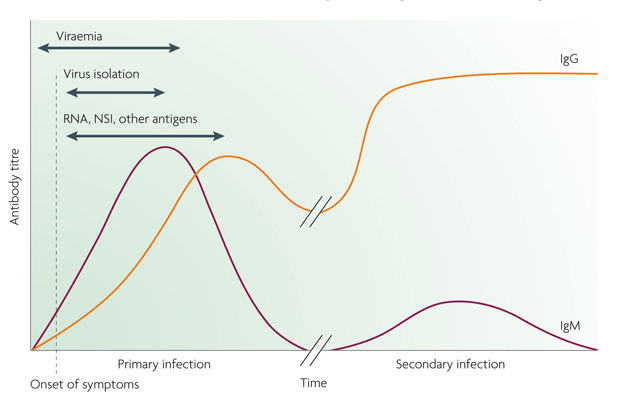Major diagnostic markers for dengue infection
Keywords
Flag Inappropriate
Delete Content

Major diagnostic markers for dengue infection
The major diagnostic markers for dengue infection include detection of the dengue virus, viral RNA, and viral antigens such as the NS1 protein when the patient has viremia (high levels of the dengue virus in the blood). IgM and IgG antibodies against the dengue virus can be detected in most patients five days after the onset of symptoms. IgG can be measured for many months and even years after a dengue infection. The amounts, or titres, of the IgM and IgG antibodies depend on whether the infection is a primary or a secondary infection. During a primary (first) dengue infection, IgM levels are very high, but during a secondary infection, IgM levels are lower. The levels of IgG actually increase during a secondary infection. Clinicians can measure the amounts of IgM and IgG to tell whether a patient has a primary or a secondary dengue infection.
This image is linked to the following Scitable pages:
Dengue has become a serious health problem worldwide, and scientists are focusing their attention on understanding how the dengue virus causes disease. As they learn more about how dengue affects the body, researchers hope to diagnose and treat dengue better. Current dengue research also aims to provide better surveillance to limit the effect of dengue epidemics. What approaches are scientists using to improve the diagnosis and treatment of dengue patients, and how can researchers reduce the threat of dengue epidemics?





















Comments
CloseComments
Please Post Your Comment